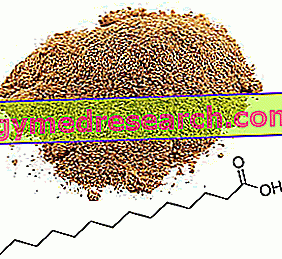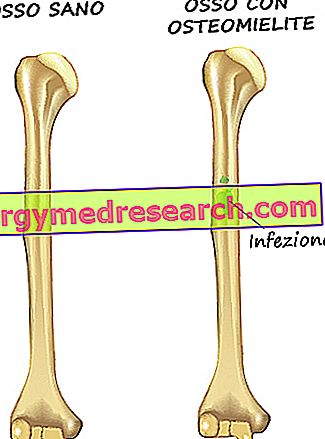Definition
Epicondylitis is an inflammatory disease that affects the tendons that connect the elbow to the muscles of the forearm. This disease is also known as "tennis elbow", as it often affects people who practice this sport, but not only.
Causes
The epicondylitis, usually, is caused by an excessive and repeated stress of the elbow, for this reason it is particularly widespread in individuals who for any reason (whether work or sport) perform repetitive movements, subjecting the elbow to continuous and excessive use .
Epicondylitis can also be caused by trauma.
Symptoms
Typical symptoms that can occur in patients with epicondylitis are pain in the elbow which can extend to the forearm, hand and wrist and pain, swelling, and joint stiffness. In addition, epicondylitis can promote the appearance of osteophytes.
If the epicondylitis is not adequately treated, the pain can worsen and become chronic, greatly affecting the quality of life of patients.
Information on Tennis Elbow - Drugs and Epicondylitis Treatment is not intended to replace the direct relationship between health professional and patient. Always consult your doctor and / or specialist before taking Tennis Elbow - Drugs and Epicondylitis Treatment.
drugs
Epicondylitis is usually a disease that tends to limit itself and heal spontaneously, but this does not always happen.
First of all, patients suffering from epicondylitis must be at rest, avoiding the activity that caused the inflammation. The use of ice packs to be applied to the elbow several times a day can be useful to reduce the swelling and pain caused by inflammation.
If this is not enough to control the disease, then the doctor may decide to prescribe analgesic or non-steroidal anti-inflammatory drugs (NSAIDs).
In cases of more severe and persistent epicondylitis it may be necessary to resort to physiotherapy, to relieve pain and muscle stiffness caused by the disease.
In some cases, moreover, the doctor could decide to undertake a therapy based on corticosteroid infiltration. However, this practice - besides being very delicate - seems to be effective only in the short term and not in the long term. Indeed, repeated injections of corticosteroids increase the risk of tendon rupture.
Finally, in very serious cases, it may be necessary to resort to surgery.

NSAIDs
When medications are needed to cure epicondylitis, NSAIDs are the first choice treatment, thanks to their anti-inflammatory and analgesic properties.
For the treatment of this pathology, NSAIDs are administered mainly orally (in the form of tablets, capsules, oral solution, etc.) or topically (in the form of gel, cream or medicated plasters).
Among the non-steroidal anti-inflammatory drugs most used in the treatment of epicondylitis, we recall:
- Ketoprofen (Arthosylene ®, Orudis ®, Oki ®, Fastum gel ®, Flexen "Retard ® ®, Ketodol ®): usually, when ketoprofen is administered orally, the recommended dose is 150-200 mg of drug per day, to be taken in two or three divided doses. The maximum daily dose of 200 mg of active ingredient must never be exceeded.
When using pharmaceutical formulations for cutaneous use based on ketoprofen, instead, it is recommended to apply the product in the affected area 1-3 times a day, or according to the doctor's prescription. To avoid the onset of photosensitivity reactions, the area treated with ketoprofen must not be exposed to sunlight and UV rays, both during therapy and for a period of two weeks from the end of the same.
- Ibuprofen (Brufen ®, Moment ®, Nurofen ®, Arfen ®, Actigrip fever and pain ®, Vicks fever and pain ®): when administered orally, it is important not to exceed the maximum dose of 1, 200-1, 800 mg of ibuprofen per day . The exact amount of active ingredient to be taken should be established by the doctor, depending on the severity of the pain and inflammation.
- Diclofenac (Dicloreum ®, Deflamat ®, Voltaren Emulgel ®, Flector ®): if diclofenac is administered orally, the dose usually used varies from 75 mg to 150 mg a day, to be administered in divided doses.
When using diclofenac-based gel, it is recommended to apply the product 3-4 times a day, directly on the affected area.
On the other hand, if the medicated diclofenac-based patch is used, it is recommended to apply two patches a day (one in the morning and one in the evening) in the inflamed area. The duration of treatment should not exceed 7-10 days.
- Naproxen (Momendol ®, Synflex ®, Xenar ®): if naproxen is administered orally, the usual dose is 500-1, 000 mg of drug per day, to be taken in divided doses 12 hours apart from 'else. When naproxen is used in the form of a gel or cream, it is recommended to perform two applications a day directly on the area affected by the inflammation.
Analgesics
Analgesic drugs are not used to cure epicondylitis itself, but to reduce the pain associated with it.
The most widely used analgesic is paracetamol (Tachipirina ®, Efferalgan ®, Panadol ®). The dose of drug usually administered orally is 500-1000 mg, to be taken as needed for a maximum of 3-4 times a day. An interval of at least 4-6 hours must elapse between one administration and another.
Corticosteroids
If the epicondylitis is particularly severe and painful, the doctor may consider it necessary to resort to corticosteroid infiltration. As mentioned, it is a very delicate practice that must be performed only by specialized personnel.
Among the corticosteroids that can be used in the treatment of epicondylitis, we recall methylprednisolone (Depo-Medrol ®). For the treatment of this pathology, methylprednisolone is used in combination with lidocaine (a local anesthetic). The dose of drug usually used is 4-80 mg, depending on the severity of the inflammation.



